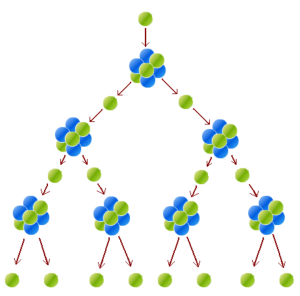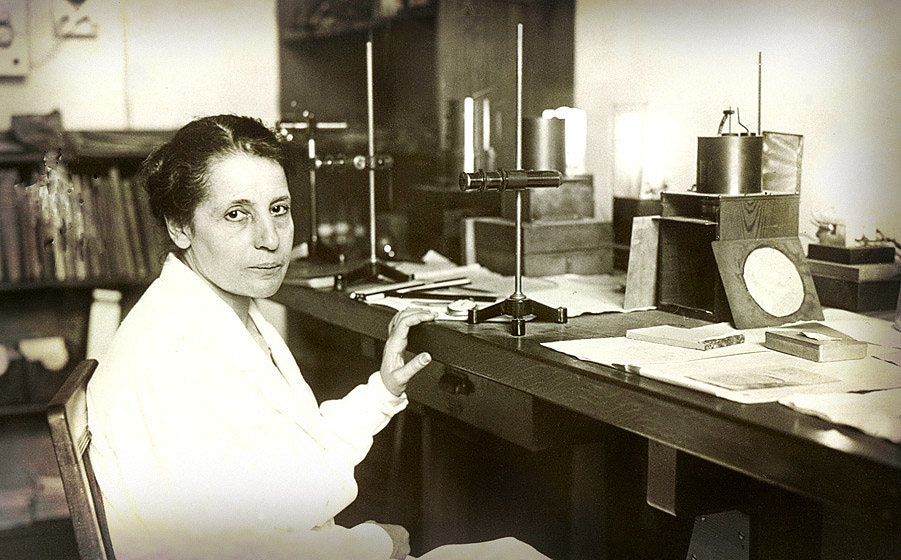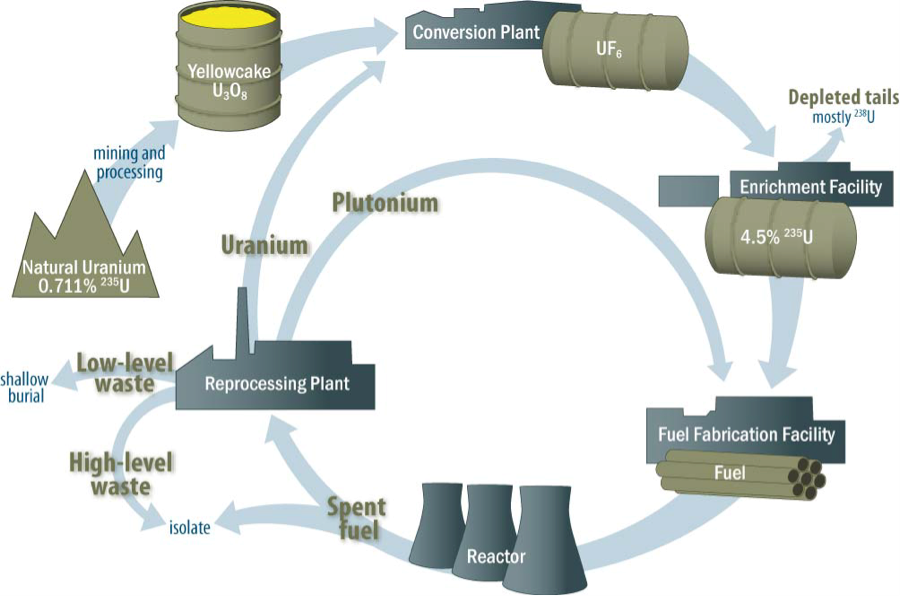The pollution and threat to human health and the environment from the civilian and the military industry
The toxic remnants from the nuclear industry
Eva Fidjestøl
The Haag April 2015
- 1. Fission (Fig 1)
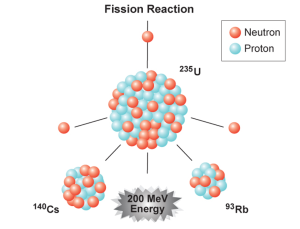 Natural uranium consists of 0,0054% U-234, 0,72% U-235, 99,27% U-238
Natural uranium consists of 0,0054% U-234, 0,72% U-235, 99,27% U-238- U-235 + n = fission products (Cs-137, Sr-90, I-129 …) + 3n + ENERGY
- Controlled fission (nuclear power) (Fig 3)
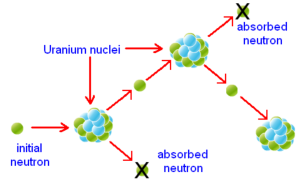
Lise Meitner (1878-1992) (Fig 4) was the first who discovered and described the nuclear fission in 1939, but it was a man, Otto Hahn who got the honor and the Nobel Prize for this. Lise Meitner was a Jew and a refugee in Sweden at the time. She protested against using this discovery to create nuclear weapons and become a pacifist end peace activist.
- Rock that contains from 0,1% uranium are called uranium ore.
- U- 235 is the only fissile isotope in the world
- Th- 232 (thorium) and U-238 is fertile isotopes that can be converted into fissile isotopes: Th-232 + n = U-233 (fissile isotope) and U-238 + n = Pu-239 (fissile isotope). There are currently no commercial nuclear reactors in the world that uses thorium and plutonium as fuel. MOX (a mixture of plutonium and uranium oxide) is used in France, Germany, Japan and Russia.
- The uranium cycle
- Nuclear energy was first utilized to make bombs
- Uranium mines provide the raw material to both the bombs and the electric power
- Uranium Enrichment Plants can produce Highly Enriched Uranium (HEU) for making bombs and Low Enriched Uranium (LEU) to fuel nuclear power reactors. This process gives a large amount of depleted uranium (DU) as wastes
- Weapon-grade plutonium is produced inside commercial power reactors.
- Reprocessing of spent reactor fuels means that the fuel is being dissolved in acid and separated by using chemical methods into 1% plutonium (Pu), 3% radioactive fission products (Cs-137, Sr-90 ..) and 96% DU.
- The used nuclear fuel, both reprocessed and dry fuel rods goes to the same interim waste storage and eventually to the permanent repositories.
- Spent fuel can only be handled remotely, and the workers must protect themselves, due to the very intense radiation.
- Separated plutonium can be handled without radiation shielding, but is very dangerous when inhaled or ingested. It must be stored safe to prevent that thieves and terrorists get axis to it.
- Waste from bomb production and nuclear power electricity production will be stored in the same repositories for many hundreds of thousand years – if they once in the future will be built. In UK they have just started to find a place where a repository can be built, and hope if all goes well that they will be able to gather highly radioactive waste from 30 storage around the country, into this new repository. This is planned to take 100 years.
- Storage is not permanent
- Disposal facility or repository is considered permanent and will not be controlled after it is closed and sealed. (Fig. 6)
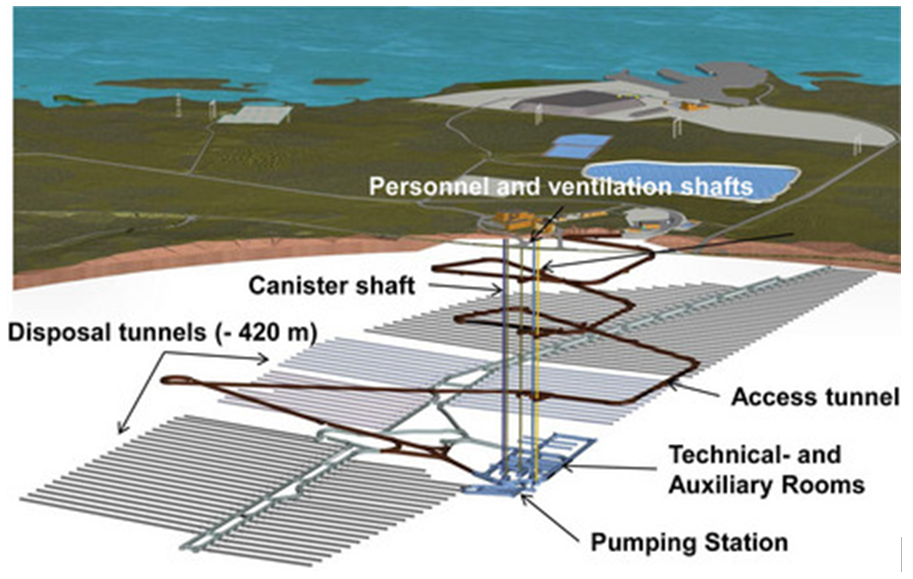
- The Toxic Remnants from the Military and the Civilian Nuclear Industry
- The health and environmental impact of the nuclear disasters at Chernobyl and Fukushima are extremely underestimated. The official reports about this are made by the International Atomic Energy Agency (IAEA), which because of their main mission to propagate the peaceful use of nuclear energy in the whole world, cannot be expected to be neutral.
- In addition, the IAEA has an agreement with the World Health Organization (WHO) that prevents the experts on radiation and health in the WHO to make a statement without the IAEAs consent.
- In 2009 came a comprehensive report on Chernobyl from scientists in Russia, Belarus and Ukraine, which is based on a large amount of research in the former Soviet republics. Here is documented much greater health consequences and death toll caused by the Chernobyl accident than in the report of the IAEA from 2006.
- Since July 1945 it has been performed over 2000 nuclear weapons tests in the atmosphere, underground and in the sea. Most people on Earth have radioactive substances in the body that comes from the fallout after these experiments.
- Many areas on planet Earth is radioactive contaminated. Nuclear weapons tests has been performed at over 60 locations in the world with a total destructive power that responded to 29 000 Hiroshima bombs. The International Organization Physicians against nuclear weapons (IPPNW) has calculated that about 2.4 million people have died due to the fallout from these tests between 1945 and 1980. Radioactive substances were found in mother`s milk and in children`s teeth.
- In 2014 were 388 nuclear reactors operating in 31 countries. Over 170 reactors have operated for 30 years or more, and are approaching the time for decommissioning. The Nuclear Decommissioning Authority (NDA) in GB claims that 145 nuclear reactors, most of them in Europe, need to be decommissioned over the next 15 years. An estimated two million cubic meters of concrete rubble will be generated as historic nuclear facilities are demolished in the decade ahead. This will be a long, complicated and resource-intensive process, paid for by the taxpayers.
- In 2012 NDA sent more than 4,000 tons of Low Level Wastes (LLW) metal from the Berkeley nuclear power plant to Studsvik in Sweden. NDA plan to finish the decommissioning in Berkeley in 2074. In Studsvik the metal was recycled and returned to the open marked as clean metal and more than 5,500 cubic meters of space at the UK`s Low Level Waste Repository in Cumbria was saved.
- The Legacy Silos Ponds in Sellafield are one of the biggest and most challenges problems for the NDA today. The ponds were used to store irradiated used Magnox fuel from the time they built the first British atomic bombs. NDA do not have the knowledge and the technology they need to clean up, and have to use big resources on research and development. NDA estimate that the clean-up of Sellafield will take more than 100 years.
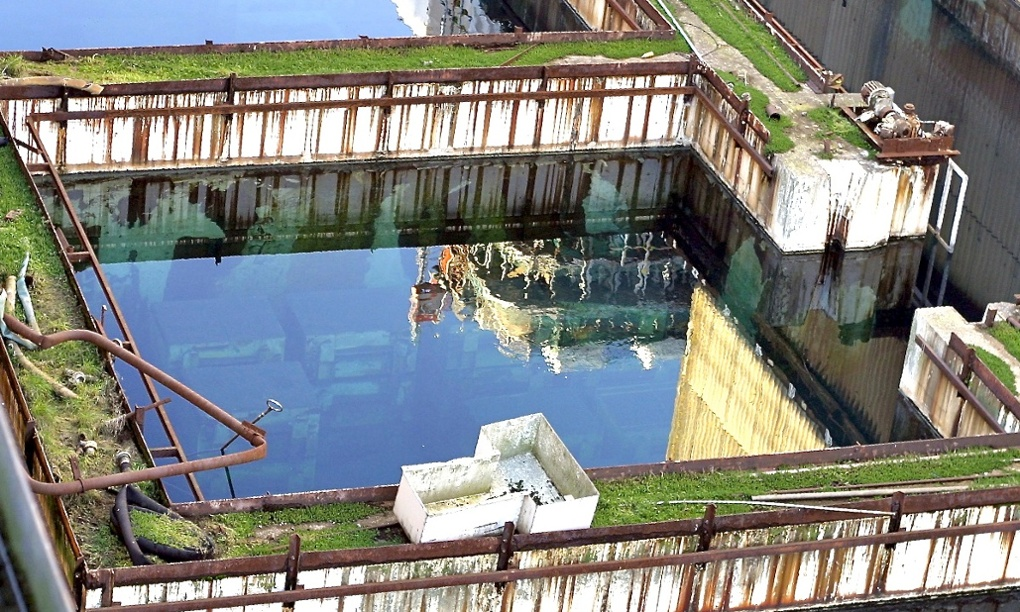
(Fig 7)
“The concrete is in dreadful condition, degraded and fractured, and if the ponds drain, the Magnox fuel will ignite and that would lead to a massive release of radioactive material,” nuclear safety expert John Large told the Ecologist magazine. “I am very disturbed at the run-down condition of the structures and support services. In my opinion there is a significant risk that the system could fail.”
“It’s like an concrete dock full of water. If you got a breach of the wall by accident or by terrorist attack, the Magnox fuel would burn. I would say there’s many hundreds of tons in there. It could give rise to a very big radioactive release. It’s not for me to make comparisons with Chernobyl or Fukushima, but it could certainly cause serious contamination over a wide area and for a very long time.”
Gordon Thompson, executive director of the Institute for Resource and Security Studies in Cambridge, Massachusetts, who is an expert at assessing radiological risk, said: “[Sellafield] contains large inventories of radioactive material that could be released to the environment in a variety of ways. The site’s overall radiological risk has never been properly assessed by the responsible authorities. [The] photos, showing disgracefully degraded open-air ponds at Sellafield, indicate that a thorough assessment of risk is overdue.”
- None of the approximately 34 countries with spent nuclear fuel from nuclear reactors has today a finished deposal for this. The great majority of these countries have no concrete plans for such facilities. Some put the need for a final disposal aside by using reprocessing in order to delay the final deposition. The facts are that the problem of disposal of
Highly radioactive wastes (HRW) and used nuclear fuel is still not resolved more than half a century after the first commercial nuclear reactor began.
- 29 years after the Chernobyl accident, none of the next generation reactors, the so-called Generation-III have been completed. Two of these types of reactors are under construction in France and in Finland with so far doubled construction time and costs.
- Nuclear weapons are produced from highly enriched uranium (HEU) and separated plutonium. The International Panel on Fissile Materials (IPFM) has since 2006 worked to map out where these substances are located. This kind of substances are not very radioactive and can be available to terrorist groups who want to create small primitive nuclear bombs or dirty bombs. The IPFM-report from 2014 tells that there are currently 1390 tons of HEU and 490 tons of plutonium in stock spread over the whole world. This is enough for tens of thousands nuclear weapons.
- The modernization of nuclear weapons takes place in eight of the nine Nuclear States (North Korea we know little about). This will be paid for by taxpayer money and leads to the reduction of social benefits.
- The production of HEU to day takes place in India, Pakistan, North Korea and Russia. The production of Pu takes place in Pakistan, India, Israel, France, Russia, China, and the UK (Sellafield). The Fissile Material Cutoff Treaty (FMCT) goes in for the secure storage of all fissionable material and halt in all production of this, but is not signed by enough States to come in force.
- Depleted uranium (DU), waste from the enrichment proses, have been used by many States to armament of tanks and military vehicles and to munitions. It is known that six States are producing uranium weapons (US, France, Russia, China, Pakistan, India), and it is believed that about 20 States have them in stock. Ammunition containing DU is being fired from tanks, helicopters and planes.
- 400.000 kg DU was used in the Iraq wars in 1991 and 2003 by the UK and the United States, and an unknown amount of DU was used in Bosnia, Serbia and Kosovo. It is often claimed that the United States has used DU in Afghanistan, and Israel in Lebanon, but this is not proven.
- Wen DU hit the target it starts to burn and an aerosol (gas) of sub-micron particles can spread hundreds of meters from the target and present a hazard to civilians long after conflict ends, particularly when used in populated areas
- The use of DU-weapons resulted in reports on major increases in cancers and birth defects in the population of the contaminated areas.
- Previous research focused on the effect of the radiological risk of lung cancer and the chemical damage to the kidney. During the last decade many peer reviewed scientific papers verifies that DU damage the genes and is responsible for many types of cancer and birth defects.
What we can learn
- Nuclear weapons and nuclear power are intertwined
- All production and transport within the uranium cycle uses energy that gives CO2 emissions. Nuclear power is not the solution to the climate problems.
- The Nuclear Industry don`t have the knowledge and technology they need to clean up the radioactive pollution after 70 years with bomb and electricity production.
- HEU, plutonium, used reactor fuel and highly radioactive nuclear waste need to be stored in secure permanent depositories which do not exist today.
- The victims of radioactive contamination have not got the help they need but big money is used on modernization of the nuclear weapons and on new expensive reactors.
What can we do? (Fig 8)
- Join our organization into ICAN, ICBUW and other campaign against nuclear weapons and nuclear power.
- ICAN: The International Campaign to Abolish Nuclear Weapons was created in 2007 in order to mobilize civil society in all countries to strive to ensure that it will be negotiating a Convention prohibiting nuclear weapons. Today ICAN has more than 300 member organizations in 90 countries.
- ICBUW: The International Coalition to Ban Uranium Weapons was launched in 2003 and has currently 160 member groups in 33 countries. ICBUW is working to bring about a ban on the use of uranium in all conventional weapons and of assistance to those States that have been exposed to such weapons. This help should consist of monitoring, health care compensation and environmental clean-up.
- Support relief work, The Children of Chernobyl, the Children of Fukushima, the victims from the fallout after bomb testing
- Learn more about nuclear issues, work and participate in national and international debates and at the United Nations
- Get in touch with national and international politicians
Sources:
Mycle Schneider, Antony Froggatt et al: World Nuclear Industry Status Report 2014
IPFM: Globale Fissile Material Report 2013
Nuclear decommissioning Authority: www.nda.gov.uk
www.icbuw.org
www.icanw.org
Reaching Critical Will:Unspeakable suffering. The humanitarian impact of nuclear weapons, 2013
Reaching Critical Will: destruction forever: nuclear weapons modernization around the world, 2013
Réseau Sortir du Nucléaire: www.sortirdunucleaire.org
Institut für angewandte Ökologie, öko-Institut e.V.: www.oeko.de
www.tocsicremnantsofwar.org
Eva Fidjestøl
esofidje@online.no
www.ikff.no
WILPF-Norway

